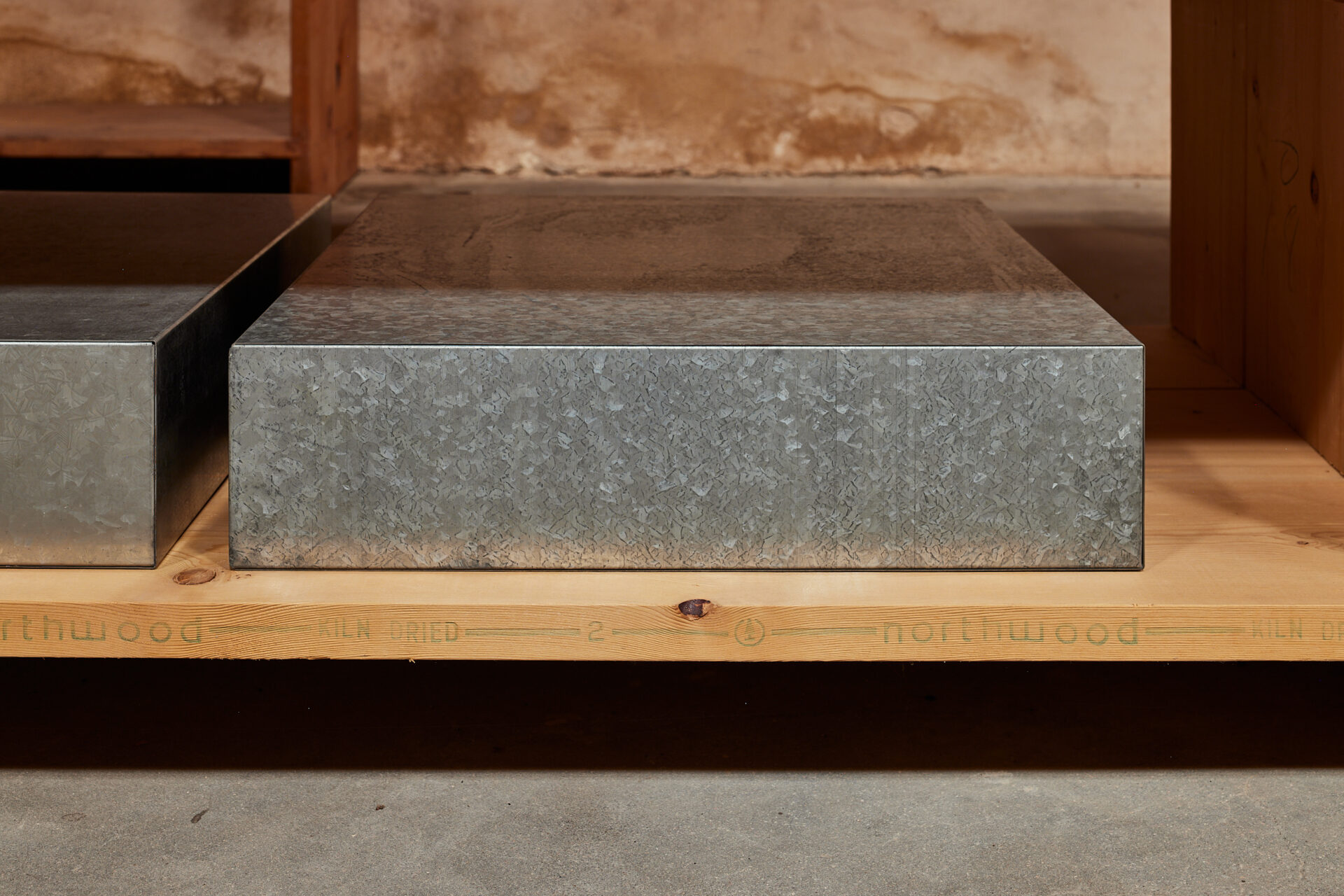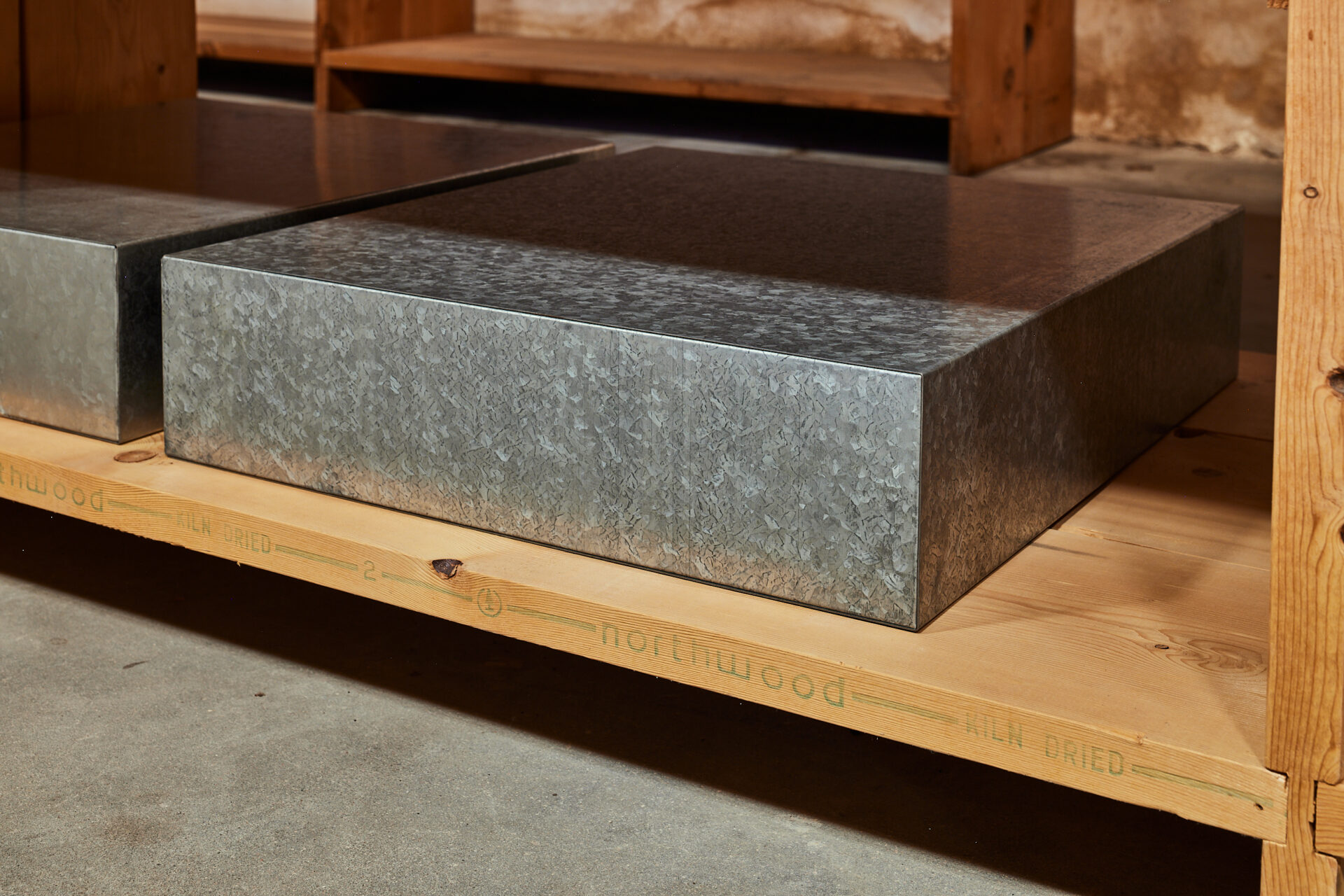Donald Judd made works informally referred to as single stacks comprised of a rectangular prism measuring 6 x 27 x 24 inches. When properly installed at roughly eye level, the work projects from the wall at four times the height of the object itself. Simple in form, a single stack not only encloses the actual space lying within, but simultaneously activates the surrounding area: the wall upon which the object is placed or the entire room within which it is situated. In a note from February 21, 1993 Judd wrote “The smallest, simplest work creates space around it, since there is so much space within.”1
This galvanized single stack is among ten works having the same form, material, and configuration first made by Judd in 1965. While they constitute a group of works by virtue of shared physical characteristics, Judd considered each of these objects to be unique. This work, identified as DSS 64 in the 1975 catalogue raisonné, is the first true single stack. An earlier work having the same dimensions but having a trough running front to back was made in 1964.2

